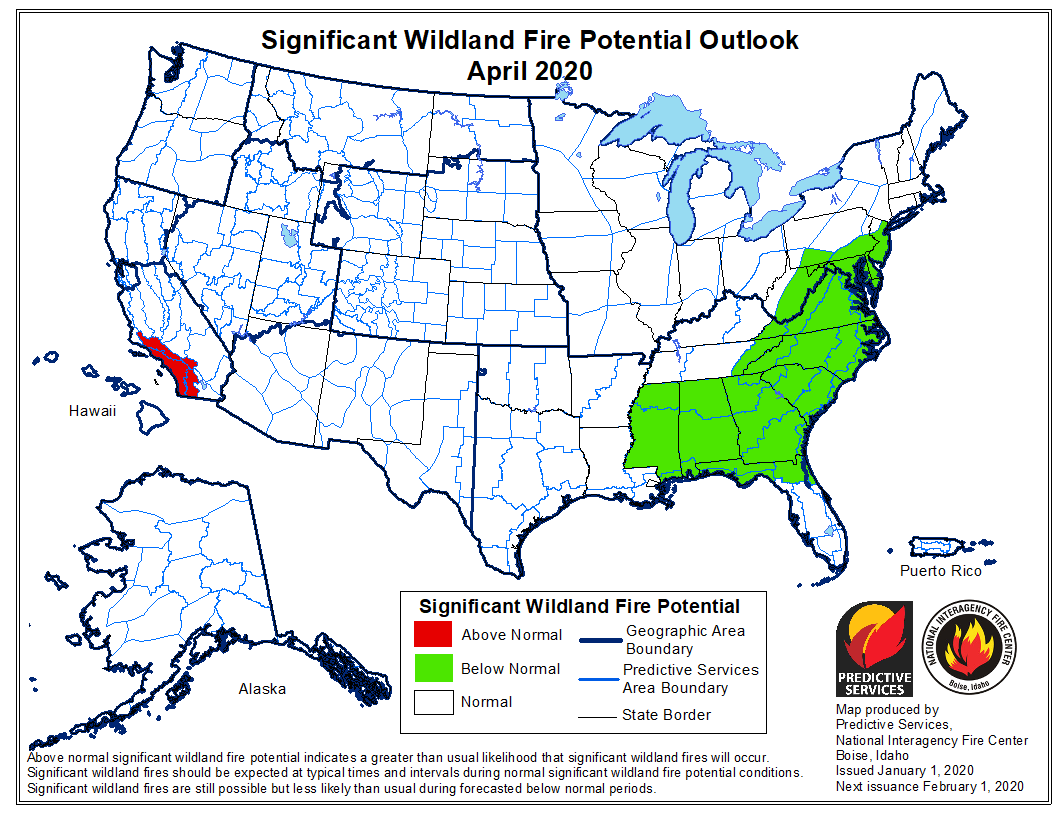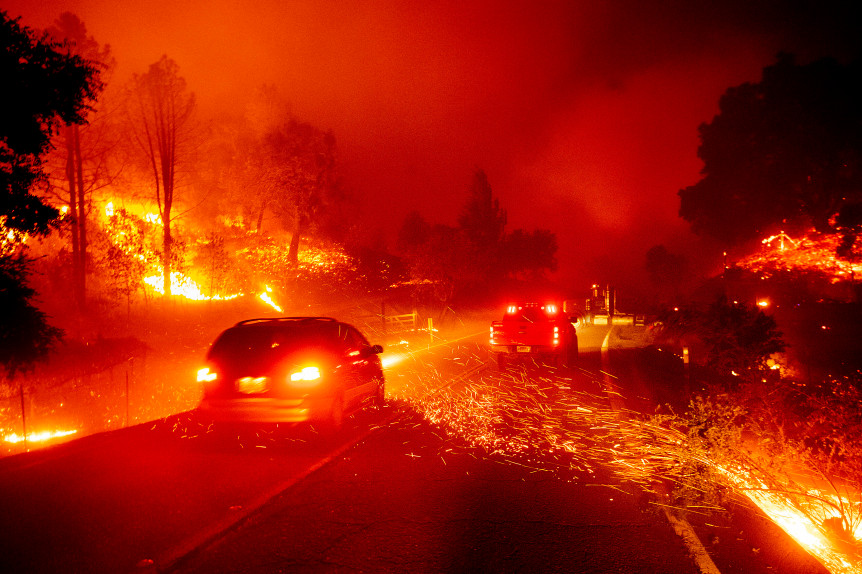Despite the trend of unprecedented wildfire destruction and the predictions for another above average potential for significant wildfire activity, the 2019 wildfire season was significantly less destructive. 2019 recorded over 49,000 fires for a total acreage of just of 4.5 million. The total acreage burned was almost half that of the previous 2 years and short of the 10 year average by more than 2 million acres.
| US WIldfire Year-to-Date Statistics (as of 12/20/2019) | ||
| 2019 (1/1/19 – 12/20/19) | Fires: 49,215 | Acres: 4,576,321 |
| 2018 (1/1/18 – 12/20/18) | Fires: 55,911 | Acres: 8,582,609 |
| 2017 (1/1/17 – 12/20/17) | Fires: 63,789 | Acres: 9,584,587 |
| 2016 (1/1/16 – 12/20/16) | Fires: 62,607 | Acres: 5,653,921 |
| 2015 (1/1/15 – 12/20/15) | Fires: 60,172 | Acres: 9,861,423 |
| 2014 (1/1/14 – 12/20/14) | Fires: 62,806 | Acres: 3,569,956 |
| 2013 (1/1/13 – 12/20/13) | Fires: 46,199 | Acres: 4,279,924 |
| 2012 (1/1/12 – 12/20/12) | Fires: 56,682 | Acres: 9,144,881 |
| 2011 (1/1/11 – 12/20/11) | Fires: 69,724 | Acres: 8,614,485 |
| 2010 (1/1/10 – 12/20/10) | Fires: 68,260 | Acres: 3,380,055 |
| 2009 (1/1/09 – 12/20/09) | Fires: 79,178 | Acres: 6,406,420 |
| 10-year average Year-to-Date | ||
| 2009-2018 | Fires: 62,129 | Acres: 6,902,261 |
| Credit: National Interagency Fire Center | ||
California Experienced Another “New Normal” Autumn
October is quickly becoming the problem child for California. As if on cue, strong Santa Ana winds again fanned numerous new wildfires across the state. At one point more than a dozen large fires were burning across the state, with the Kincade and the Getty Fire capturing the most media attention.
Still recovering from the Tubbs Fire from October 2017, Sonoma County ignited again on October 23, 2019. The Kincade Fire near Geyserville burned over 77,000 acres on its way to becoming the largest fire in Sonoma County history. However, due to the fire’s location, the availability of fire fighting resources, and fire’s slower rate of spread, destruction was mitigated to 374 structures. The Tubbs fire, in comparison, destroyed 5,636.
Although small in comparison to some of the other fires popping up across the region, the Getty fire’s proximity to the affluent who’s who section of Hollywood, captured nationwide news. The Getty Fire in Los Angeles broke out on October 28 and quickly burned up to the multimillion dollar homes of the Brentwood neighborhood. The National Weather Service issued an Extreme Red Flag Warning for the area and warned of record setting wind gusts up to 80mph.
Thousands of residences were placed under mandatory evacuation orders, and the fear was that the winds and terrain could allow the fire to burn all the way to the coast. Thankfully, the feared conditions failed to materialize. Before containment, however, the Getty Fire still burned nearly 800 acres and destroyed 10 homes.
Unfortunately these late season fires are expected to be the “new normal” for California. Cal Fire estimates the length of the California fire season has increased, on average, by over 2 months and points to climate change as the, “key driver of this trend.”
Wildfire Outlook for the Beginning of 2020
Below is a brief summary from the National Significant Wildland Fire Potential Outlook, provided by the National Interagency Fire Center, for the period of January through April. The full outlook can be located here.
This outlook period, January through April, is typically the slowest period of the year for fire activity. The development of large fires is rare, weather-event driven, and occur on the lee side of mountain ranges during warm, dry wind events. Probabilities for such events will remain low through most of February but will increase late month along the southern portion of the Rocky Mountain Front as the seasonal change begins prior to short duration events will shift northward into western portions of the central and northern Great Plains.
This is considered a normal progression for the pre-greenup season. Most other areas should remain free of significant fire activity, though some activity could be possible in lee-side areas during wind events. In the East, the ongoing cool and wet conditions should promote Normal to Below Normal Significant Large Fire Potential through the spring greenup though some activity could be possible across portions of southwestern Florida where conditions remain slightly drier than average.
Normal significant large fire potential is expected across the United States during the outlook period except for Southern California. The rains that Southern California experienced during the onset of winter is expected to taper off significantly, with the normally wet January and February forecast to lighter than normal. The reduced precipitation could bring the return of drought conditions for portions of the state. Dry fuels, higher than normal temperatures, and offshore wind events could bring elevated fire danger to the region as early as late April. In fact, NIFC predicts that, “grassfire Season may be a few weeks earlier than usual in 2020 with resource demand likely centered on foothill and urban interface regions.”

Wildfire Potential for April 2020





One Comment